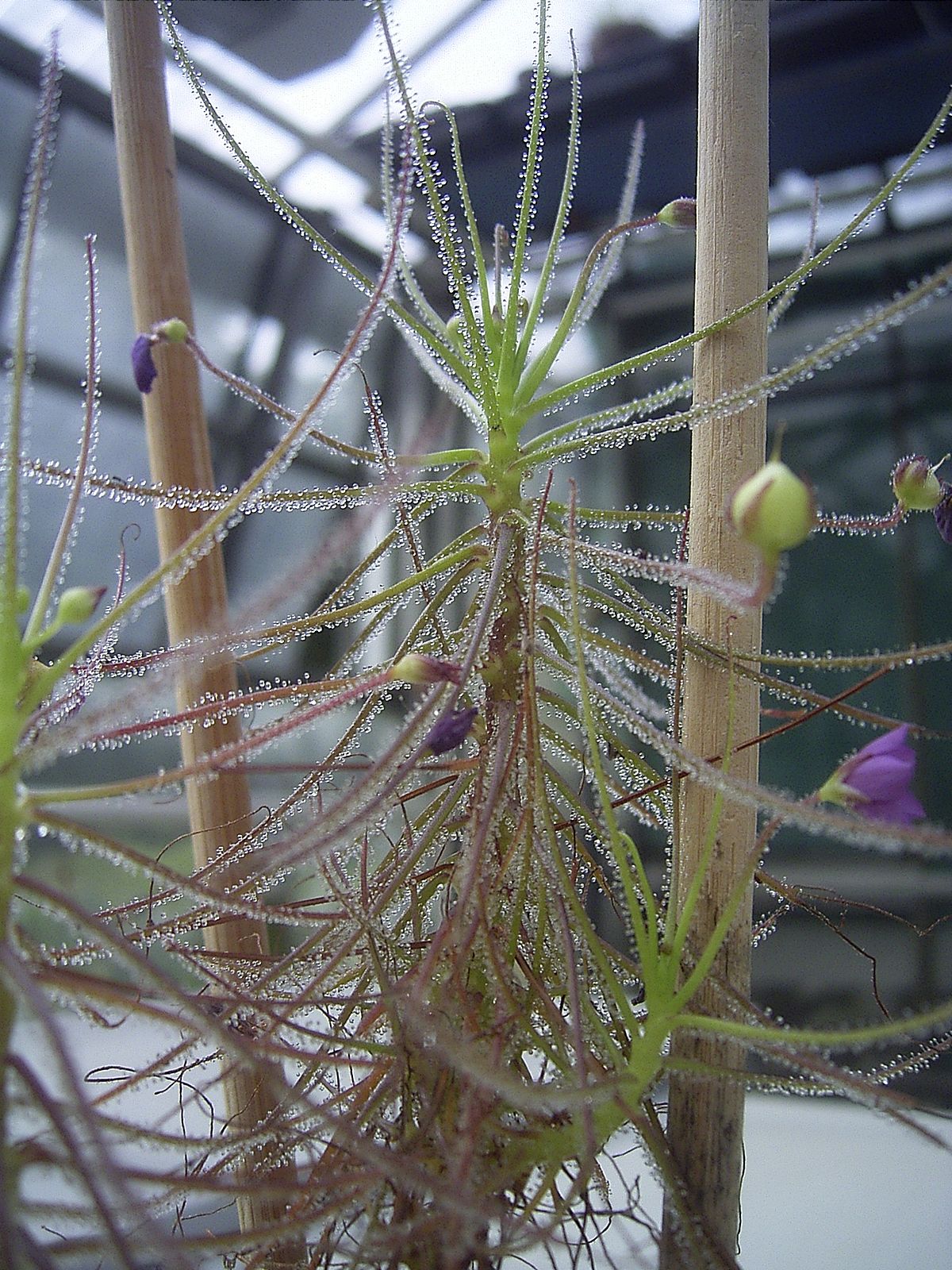Rainbow plants
(Byblis aquatica)

Description
Byblis aquatica is an insectivorous plant belonging to the genus Byblis, commonly known as the rainbow plants. It was described by Allen Lowrie and John Godfrey Conran in 1998, assigned to a group of annual north Australian species known as the "Byblis liniflora complex". It grows in semi-aquatic conditions and uses stalked mucilagenous glands (similar to those employed by the unrelated sundews and Drosophyllum) covering its leaf surfaces to attract, catch, and digest insect prey to supplement the poor environmental nutrient supply. The plant's leaves are 2–4 cm. (0.8-1.5 in.) long, highly filiform (elongated and narrow), round in cross-section and tapering at the end. Young leaves are bright green and grow uprightly; as they age, they darken to a maroon (color) and droop. The leaf surface is covered with stalked mucilaginous glands along its entire length. These serve not only to attract and trap insect prey, but also allow the plant to "hold on" to neighboring structures for support. Byblis aqauatica flowers are born singly at the tip of 1.5–3 cm. stems similar in appearance to the leaves. These emerge from the leaf axes in mature plants. The five-petaled flowers deep purple flowers appear between January and May (during the Australian summer), although only a few at a time. The generally glabrous, ovate sepals are 3–4 mm. long. The obovate petals are deep purple, 5–7 mm. long and up to 4.5 mm. wide, and have notched margins. The filaments are 2-2.5 mm. long, bearing 0.9-1.3 mm. anthers. The pistils are 2-2.5 mm. long and bear a rough stigma. Fertilized flowers mature to form a 3–4 mm by 2.5–4 mm egg shaped, two-parted seed capsules. As the seed capsule dries out it cracks open (dehisces), dropping the seed on the ground or water surface (see the gravity and water dispersal). The black, 1-1.3 mm. long seeds are grooved lengthwise.
Taxonomic tree:







